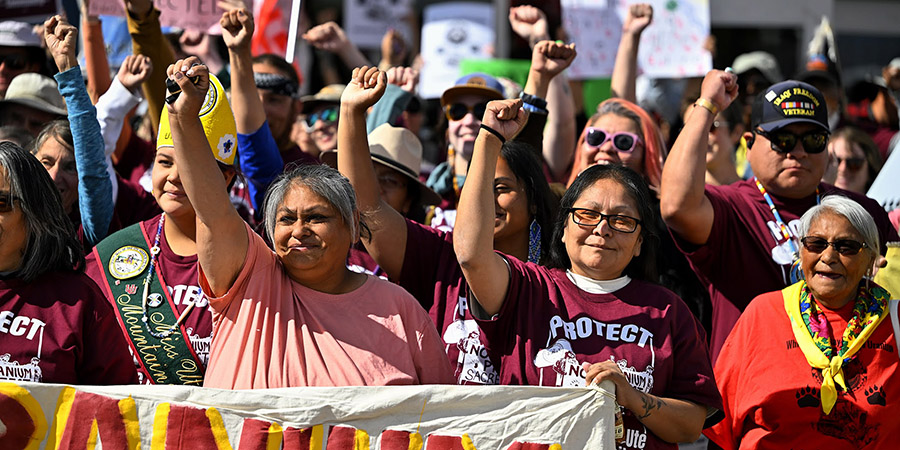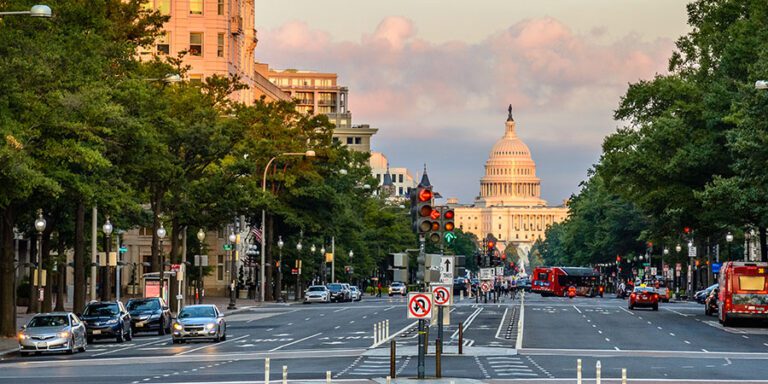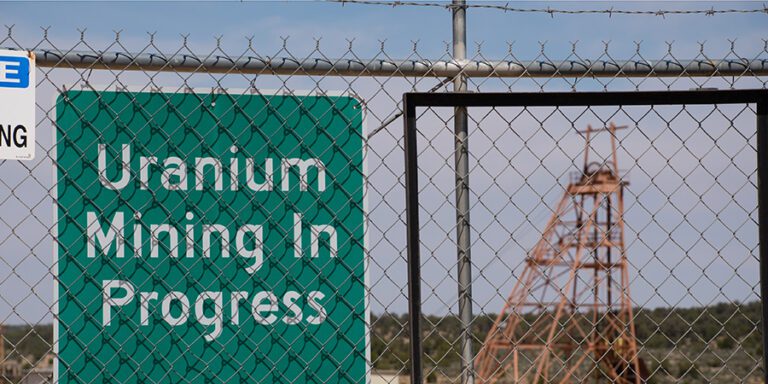
Tribal communities from across the Southwest join White Mesa Ute to protest uranium mill.
Ute tribal members in White Mesa, Utah and the Ute Mountain Ute Tribe are getting some help in their decades-long struggle to protect their land, water, and people from a nearby uranium mill. Every year, local grassroots group White Mesa Concerned Community organizes a spiritual walk to protest the mill.
On October 4, 2025, a windy Saturday, members of the Havasupai Tribe, Navajo Nation, Acoma Pueblo, and others convened on the White Mesa Ute reservation. They were there to show their support for the Ute community.
Many traveled from places along the more than 300-mile uranium haul route connecting the controversial Pinyon Plain Mine (formerly Canyon Mine), near Grand Canyon National Park, to the mill. Others came from communities impacted by the long history of uranium mining and milling contamination across the Southwest. All were gathered to send a message: Stop radioactive contamination.
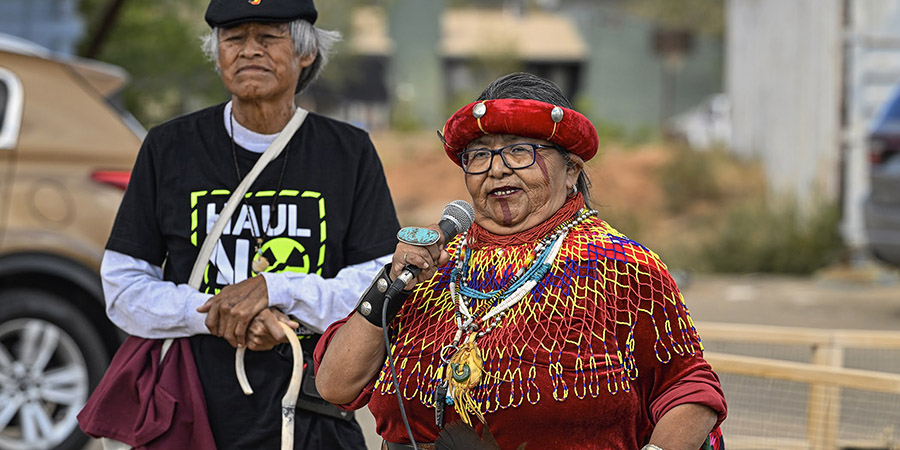
“These companies should know that if anybody gets sick in these lands, that they better be ready…to right their wrong. We shouldn’t let them go back to their own lands and leave us here to die,” said Dianna Sue White Dove Uqualla. A Havasupai elder, Uqualla traveled from her village at the bottom of a side canyon off the Grand Canyon to join the walk.
Bears Ears National Monument and the uranium mill next door
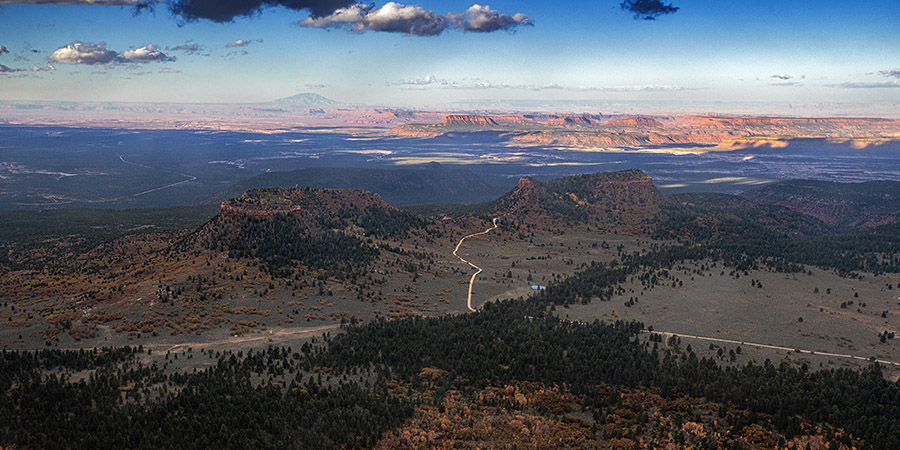
The uranium mill in question is owned by Energy Fuels Resources. It’s the last operating conventional uranium mill in the United States. White Mesa, population about 300, is its closest neighbor. The mill is located on an expansive tableland with panoramic views of Bears Ears National Monument. Community members in White Mesa have long opposed it. Some tribal members worry the mill will contaminate springs, plants, and wildlife. As a result, some have stopped using ceremonial springs and hunting deer and rabbits near the mill.
“This is our sixth year of doing this walk,” explained community organizer Yolanda Badback. Badback is carrying on the family tradition of speaking up for her community. Her uncle, Norman Begay, led community opposition to the mill beginning in the 1990s. With more than 150 walkers from across the Southwest, 2025 was the largest show of intertribal solidarity since the walk began.
Turning uranium waste into a business model

Originally designed and built to process uranium ore mined from rock, the uranium mill on White Mesa has expanded its business model. In lean times, the mill has made money by accepting radioactive materials from other contaminated military and industrial sites across the United States, and as far away as Japan. The mill extracts small amounts of uranium from these radioactive materials. Then it discards the leftovers in giant waste ponds a few miles from the White Mesa community. With uranium prices up, the mill is also trying to branch out into rare earths, raising millions of dollars from investors. But at what cost to tribal members who live nearby?
Concerns about contamination from the mill
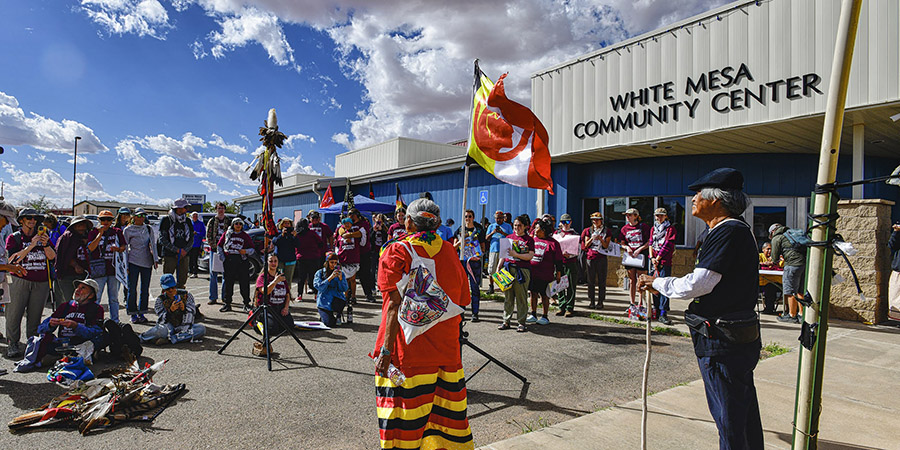
“I’m against this mill. I’ll always be against it,” said Ute Mountain Ute Tribal Councilman Conrad Jacket. “This waste comes from all around the world to right here…and when they dump it here, you see the wind’s blowing. And it’s headed east. And it’s blowing into Colorado. That’s how it’s connected to everywhere. It’s not just our issue. It’s everybody’s issue.”
Since 2024, the mill has also accepted uranium ore trucked from the Pinyon Plain uranium mine (formerly Canyon Mine) south of Grand Canyon National Park. The mine sits on the ancestral lands of the Havasupai people. It’s just a few miles from their sacred mountain, Red Butte. The Havasupai Tribe has long opposed the mine. They fear that contamination from the mine will seep into deep groundwater below, which feeds the blue-green waters of Havasu Creek, the source of the tribe’s iconic waterfalls. The mine hit a perched aquifer in 2016. Since then, tens of millions of gallons of groundwater contaminated with high levels of uranium and arsenic have been pumped out of the mine shaft. Now, uranium ore from the mine is being trucked to the mill on White Mesa. Along the route, many communities oppose the trucking.
Intertribal solidarity against sending uranium and waste to White Mesa
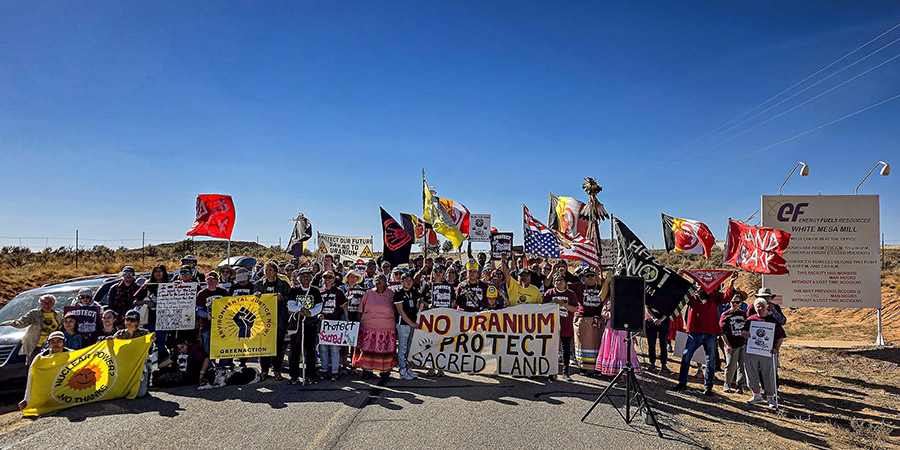
“I live in the middle of the Pinyon Plain Mine haul route to White Mesa, in Tuba City,” said Treina Jones, of the Navajo organization Bidí Roots. “We are here in support of the White Mesa community, the Havasupai community, and all the communities that are along this haul route. It affects all of us.”
“The uranium that’s being trucked over here, you know they tell us: Oh they’re securing it. They put a tarp over it,” Uqualla told the crowd. “But you know what? Wind is more powerful than a tarp. It will flap and take these little particles out and drop it along the way as it’s traveling to here. As I came, my heart breaks, because that’s a lot of land that it’s contaminating already. They can’t control the wind. They can’t control the water…These winds pick up these molecules and take them miles away… It makes me feel hurt because I have grandchildren too,” Uqualla added.
Terracita Keyanna of the Red Water Pond Road Community Association, a group of Diné families affected by uranium mining and milling in the Church Rock area on the Navajo Nation, also traveled to White Mesa in a show of solidarity. Church Rock was the site of the largest spill of radioactive materials in U.S. history when a waste pond at a uranium mill breached a dam in 1979. “We want to make sure that the waste from our community doesn’t come here,” Keyanna said. “That is the proposal and we continue to say: No.”
A message for the nation
As uranium trucks from Pinyon Plain Mine and trucks carrying radioactive materials from Superfund sites like the Midnite Mine on the Spokane Indian Reservation continue to roll across White Mesa, the White Mesa community is pushing back. And they’re no longer alone.
“Thank you to all of you for supporting us, all the way from Grand Canyon,” Malcolm Lehi, who represents White Mesa on the Ute Mountain Ute Tribal Council, told the crowd. Behind him, the Ute Mountain Ute tribal flag flapped in the wind. “My ancestors always told me that when the wind blows, the message is being sent across these lands. Across this nation.”
And the message from White Mesa is loud and clear: Stop sending radioactive materials here.

